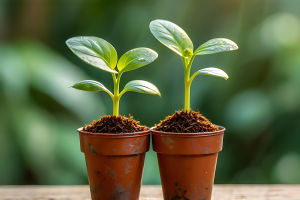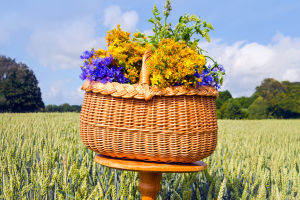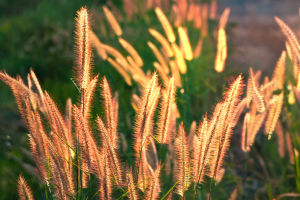Water scarcity is one of the most pressing challenges of the 21st century.
With climate change intensifying, regions around the world are experiencing more frequent and severe droughts, putting significant pressure on water resources.
As we look for sustainable solutions, we are turning to nature itself—specifically, to drought-resistant plants. These plants have unique traits that allow them to survive with minimal water, and they could play a key role in helping us adapt to an increasingly water-scarce world. But how exactly can these plants help, and why are they so crucial in our fight against climate change?
What Makes a Plant Drought-Resistant?
Drought-resistant plants, also known as xerophytes, are adapted to survive in environments with limited water. They have developed a range of mechanisms that allow them to conserve water and thrive under harsh conditions. Some of the most common characteristics of these plants include deep or widespread root systems that can access water from lower soil layers, thick, waxy leaves that reduce water loss, and the ability to store water in specialized tissues.
For example, cacti store water in their fleshy stems, while succulents, like aloe vera, have thick leaves that retain moisture. Some drought-resistant plants also have a unique metabolic process called CAM (Crassulacean Acid Metabolism) photosynthesis, which allows them to open their stomata at night rather than during the day, thus reducing water loss through transpiration.
Why Drought-Resistant Plants Are Crucial
As climate change continues to alter rainfall patterns, drought-resistant plants are becoming more important in maintaining both natural and agricultural ecosystems. In arid regions, these plants are essential for preserving biodiversity. They provide food and shelter for wildlife and stabilize soil, preventing erosion in dry landscapes.
In agriculture, drought-resistant crops can ensure food security in regions prone to water shortages. For instance, crops like millet, sorghum, and certain varieties of wheat and corn are more tolerant to dry conditions than traditional staples. By incorporating these plants into farming practices, we can reduce the reliance on irrigation and decrease the strain on freshwater resources.
Building Sustainable Cities with Drought-Resistant Plants
Urbanization is another area where drought-resistant plants can make a significant impact. Cities are known for their heat islands and high water usage, especially in parks, landscaping, and public spaces. By integrating drought-resistant plants into urban landscapes, we can not only reduce water consumption but also make our cities more resilient to climate change.
For example, using drought-tolerant grasses and shrubs in public parks and gardens can drastically reduce the need for constant irrigation. This would not only conserve water but also lower energy use, as less water would need to be pumped and processed. Some cities, such as Los Angeles and Tucson, are already implementing xeriscaping (landscaping with drought-resistant plants) to conserve water in public spaces and private homes.
Supporting Local Communities and Livelihoods
In many developing countries, where water scarcity is a constant challenge, drought-resistant plants are proving to be life-changing. In these regions, communities rely heavily on agriculture for their livelihoods, and water shortages can lead to crop failures, food insecurity, and economic instability. By introducing drought-tolerant crops, farmers can ensure more reliable harvests even in times of drought.
Moreover, these plants can help in reforestation and land restoration projects. In places like sub-Saharan Africa, for example, drought-resistant plants are being used to restore degraded land, improving soil health and providing a foundation for more sustainable farming practices. These efforts not only improve food security but also help combat desertification and protect vital ecosystems.
Can Drought-Resistant Plants Solve the Water Crisis?
While drought-resistant plants are an important tool in managing water resources, they are not a quick fix. They are part of a broader strategy that includes reducing water waste, improving irrigation techniques, and addressing the root causes of climate change, such as greenhouse gas emissions.
Experts agree that drought-resistant plants alone won't be enough to fully solve the water crisis. Dr. Jane Smith, a climate scientist at the University of California, emphasizes that while these plants can help mitigate the effects of drought, we must also focus on large-scale solutions like water conservation, better water management practices, and renewable energy adoption. "Drought-resistant plants are a piece of the puzzle, but we need to address the underlying drivers of climate change to truly secure our water future," says Dr. Smith.
Conclusion: A Sustainable Future
Drought-resistant plants offer a promising solution to help us cope with water scarcity in a warming world. From supporting agriculture and restoring ecosystems to making our cities more sustainable, these plants are a vital resource in the fight against climate change. However, we must also adopt a multifaceted approach that includes improved water management and global efforts to curb climate change.
As we continue to face the challenges of a changing climate, the role of drought-resistant plants in securing water resources and sustaining ecosystems will only grow. By understanding and utilizing their potential, we can help ensure that future generations have access to the water they need to thrive.
So, what do you think? How can we use drought-resistant plants to build a more sustainable future? Share your ideas with us in the comments below!


